
To view your Carrier Status Reports, select the Carrier Status tab at the top of your health reports page.
Carrier Status Introduction
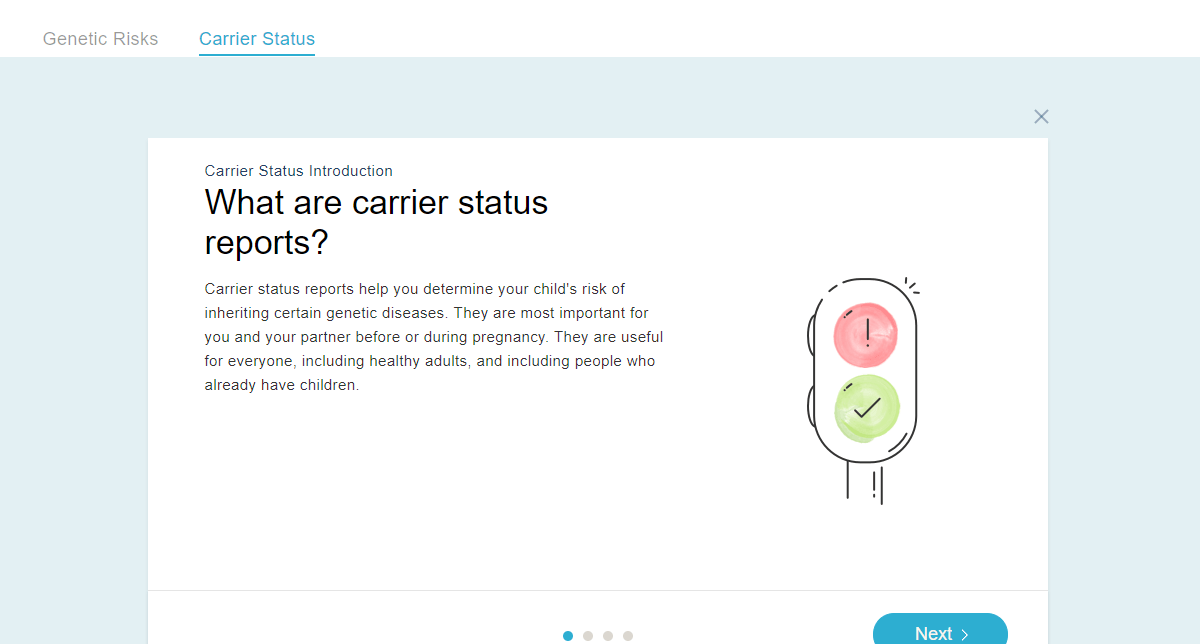
The first time you view these reports, you’ll receive a quick introduction, similar to the one you see before viewing your Genetic Risk Reports. The introduction will explain what it means to be a carrier (or not to be one), and why carrier status reports are important for you and your family.
On the page that summarizes your carrier status results, you’ll see any conditions for which you are likely a carrier listed at the top, and the remaining conditions, for which you are not likely a carrier, listed at the bottom.
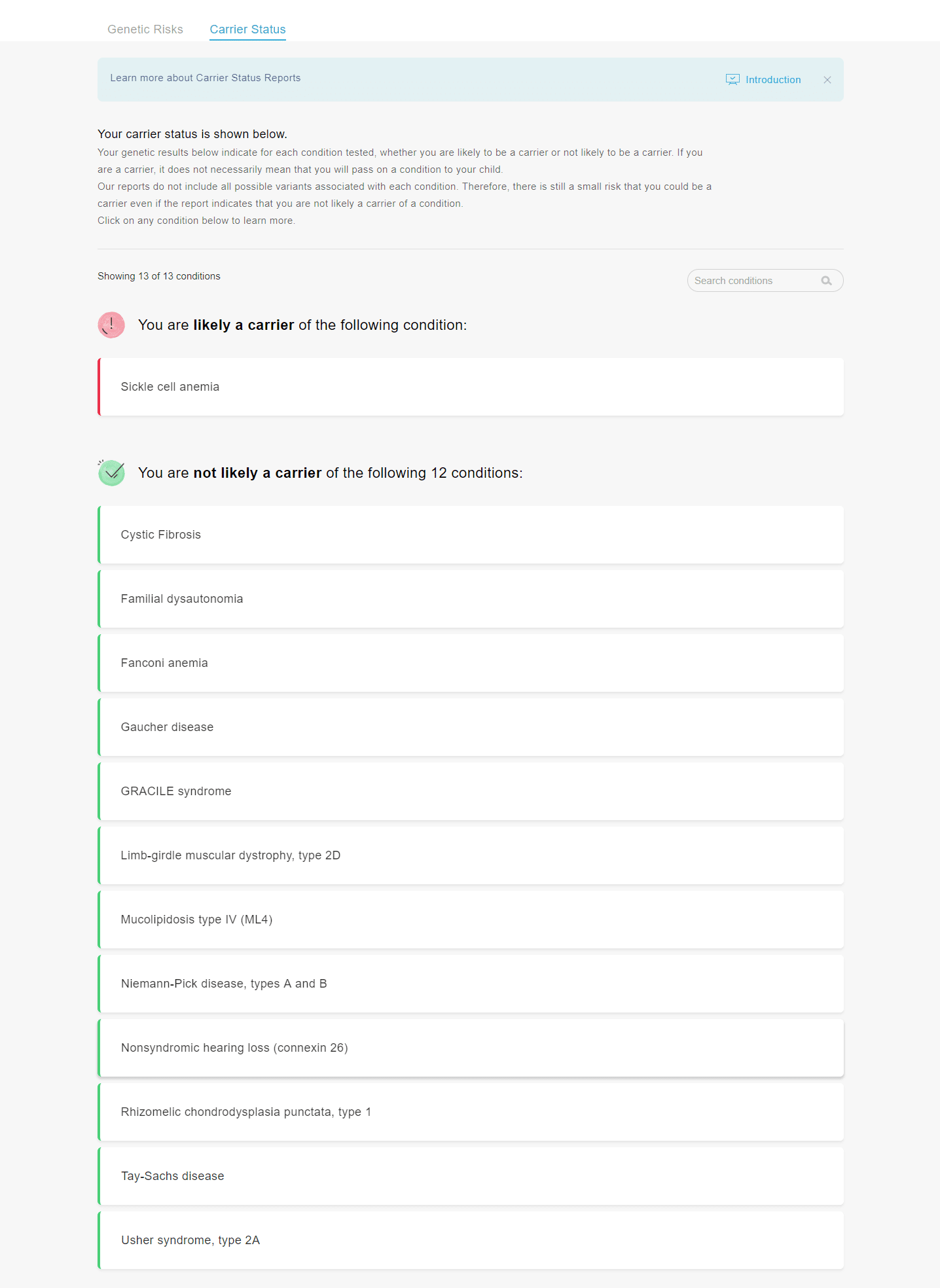
Click on the name of any of the conditions to view your detailed report for that condition.
The sample report below shows that a pathogenic variant was detected for sickle cell anemia. This finding indicates that the person is likely a carrier of sickle cell anemia. The report details exactly which variants were analyzed.
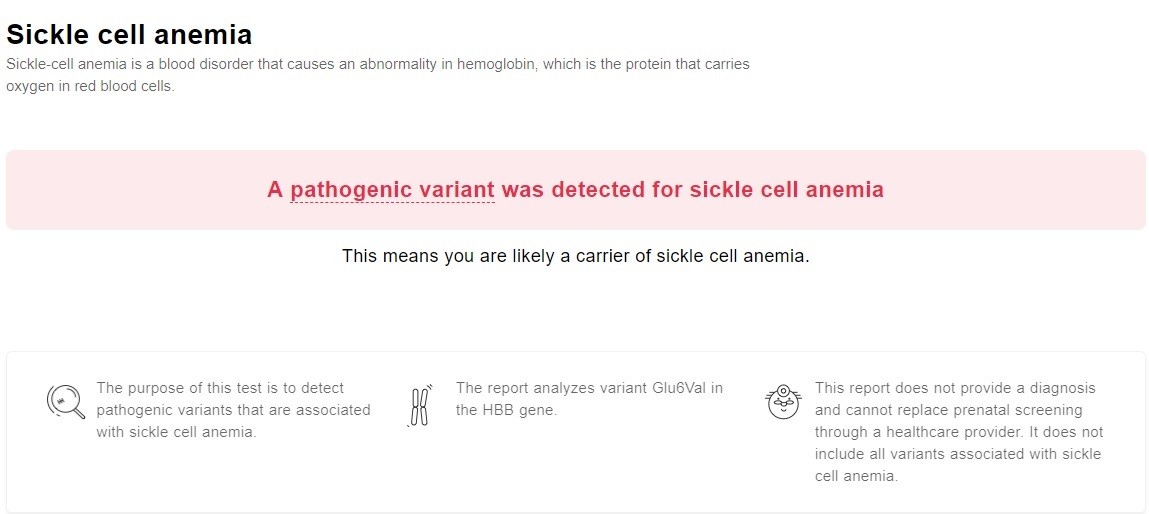
The report explains more about the implications of being a carrier, and the potential of passing on a pathogenic variant to one’s child.
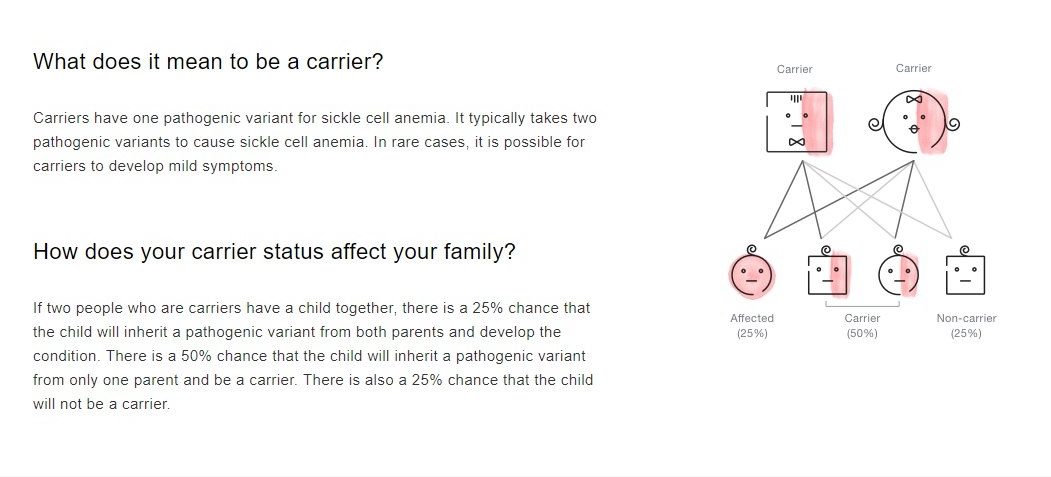
The “About the condition” tab is similar to the same tab in your Genetic Risk Reports — it offers you more information about the disease, signs and symptoms, prognosis, causes, frequency, and inheritance patterns.
Report details
The “Report details” tab identifies the exact variants that have been tested, the findings of the test and whether any of the variants are pathogenic, and the frequency of this variant among different ethnicities.
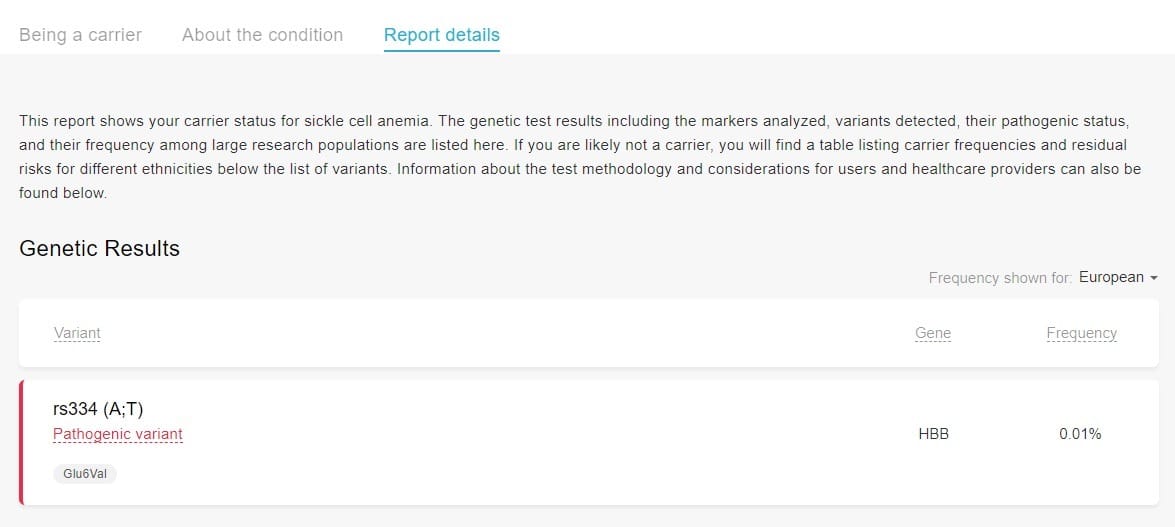
As with the genetic risk reports, extensive information on testing methodology, interpretation, and risk estimates are provided.
